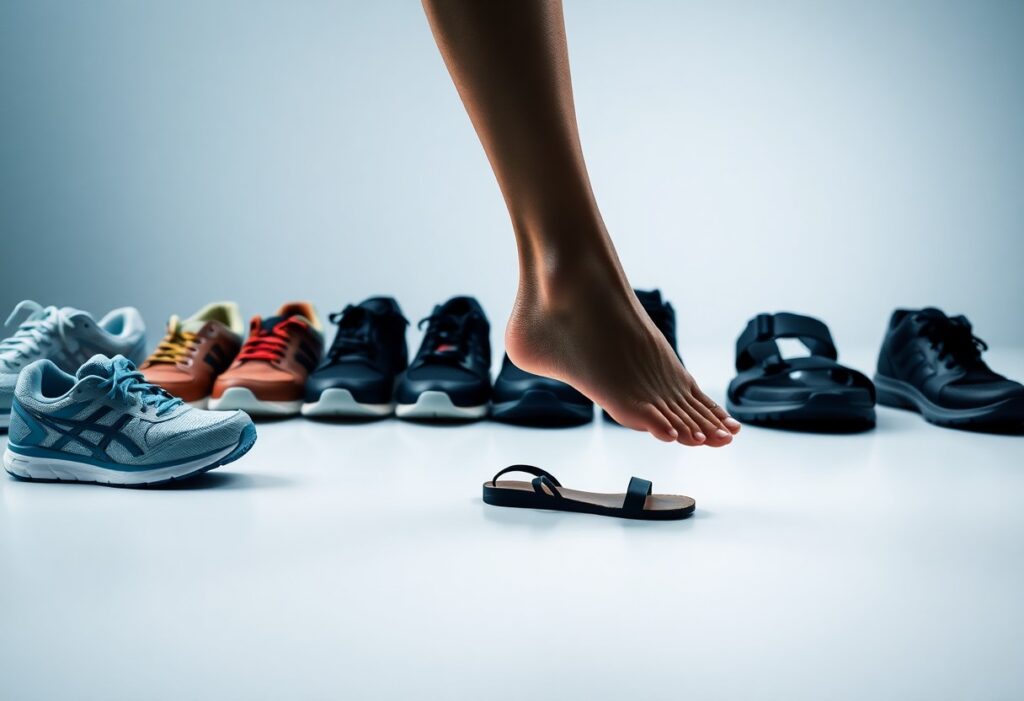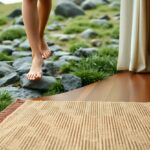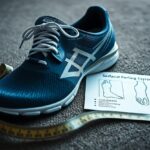
As you navigate your daily life, the footwear you select can play a crucial role in enhancing or impairing your foot health. Many people often assume that shoes boasting enhanced cushioning and support are the best remedy for foot discomfort. However, conventional footwear frequently causes more harm than benefit. Dr. Alissa Kuizinas, a renowned podiatrist from Massachusetts, champions the use of barefoot shoes or minimalist footwear, arguing that they can promote stronger, healthier feet. By choosing shoes that allow for natural foot movement, you can significantly reduce the risk of developing foot problems while improving your overall foot well-being.
Recognizing the Hidden Dangers of Traditional Footwear
Although traditional shoes may provide temporary relief from foot pain, they often exacerbate existing conditions and introduce new complications, as highlighted by Dr. Alissa Kuizinas. She points out that the $133 billion shoe industry often prioritizes style and profit over genuine foot health, resulting in designs that can constrict and weaken your feet over time. This reliance on conventional shoes can create a cycle of dependency, ultimately jeopardizing your foot health and wellness.
Examining the Shoe Industry's Misguided Approach to Foot Health
The root of this issue lies in the shoe industry’s flawed approach to foot health, which tends to emphasize adding excessive cushioning, support, and rigid construction to footwear, rather than addressing the fundamental causes of discomfort. This method can lead to an unhealthy dependency on shoes that may actually undermine your foot health over time, resulting in numerous complications that could easily be avoided.
Unpacking the Shortcomings of Conventional Shoe Designs
Traditional shoe designs often incorporate narrow toe boxes, stiff soles, and excessive cushioning that can restrict natural foot movement, ultimately resulting in weak and dysfunctional feet. Dr. Kuizinas asserts that footwear should protect your feet from external elements rather than limit their natural motion. Ideally, a well-crafted shoe should emphasize natural foot function and incorporate minimalist features such as spacious toe boxes, flexible and flat soles, and minimal cushioning to support optimal foot health.
By opting for barefoot shoes or minimalistic footwear, you can actively work to strengthen your feet and improve your overall foot health. Dr. Kuizinas advocates for the principle of utilizing as little shoe as possible, which enables your feet to function naturally and move freely—a crucial aspect for maintaining healthy foot mechanics.
The Vital Importance of Allowing Natural Foot Movement
Wearing footwear that restricts your foot's natural movement can lead to numerous foot issues and discomfort. It is imperative to assess how your shoe choices impact your overall foot health and comfort levels. Understanding this relationship can guide you toward better footwear choices that promote well-being.
Evaluating the Impact of Shoes on Foot Mobility and Function
To truly understand how shoes influence your foot's mobility, it's essential to scrutinize the specific design elements and characteristics of your footwear. Traditional shoes often come equipped with cushioning and support features that can paradoxically hinder your foot's natural movement, leading to weak and dysfunctional feet over time. Such limitations can obstruct your feet from developing the necessary strength and flexibility required for optimal performance and health.
Reaping the Benefits of Natural Foot Mobility
Embracing natural foot movement offers extensive advantages, as strong feet are foundational to overall foot health. By choosing minimalistic shoes or barefoot footwear, you empower your feet to function as they were intended, fostering strength and resilience. Natural movement is a key component in cultivating strong feet. When restricted by conventional footwear, you risk developing various foot problems and discomfort. On the other hand, adopting minimalistic shoes or barefoot options can significantly enhance your foot health by promoting natural movement and supporting strength-building. By making informed footwear choices, you can reduce your risk of developing foot issues and contribute to your overall foot wellness.
Diving Deep into the Concept of Functional Footwear
Understanding functional footwear is paramount, as these shoes are designed with a focus on both foot health and natural movement. Functional shoes are crafted to allow your feet to operate as intended, eliminating the need for excessive support or confinement that traditional footwear often imposes.
Defining Functional Shoes and Their Essential Attributes
Upon researching and experimenting with various shoe types, you will find that functional footwear boasts distinct characteristics, such as a spacious toe box, flat and flexible soles, and minimal cushioning and support. These qualities empower your feet to move freely and naturally, fostering stronger and more effective foot mechanics.
Enhancing Foot Health Through Functional Footwear
Wearing functional shoes can yield numerous benefits, including improved foot strength, a lower risk of injury, and enhanced overall foot health. These shoes support your feet in functioning as they were designed, paving the way for stronger feet and better balance in everyday activities. Functionally crafted footwear promotes optimal foot health and minimizes the risk of developing foot ailments. By selecting functional options like barefoot shoes or minimalistic choices, you actively foster healthy foot function and lessen the chance of foot pain and injury. Transitioning to functional footwear may require time and patience, but the long-term benefits for your foot health will be invaluable.
Recognizing the Key Features of Functional Footwear
To achieve peak foot health, it is vital to seek out shoes equipped with specific features. The essential attributes to consider include:
- Wide toe box
- Flat and flexible soles
- Minimal cushioning and support
Being aware of these characteristics will significantly assist you in selecting shoes that encourage healthy foot function and support your overall wellness.
The Significance of Wide Toe Boxes and Flexible Soles
A fundamental feature of functional shoes is a wide toe box, which allows your toes to spread naturally. This thoughtful design helps prevent toe jamming and other discomfort-related issues that could lead to chronic foot pain and other complications.
Understanding the Necessity for Minimal Cushioning and Support
In addition to a wide toe box, functional shoes should also incorporate minimal cushioning and support. This design element enables your feet to move in a natural manner while simultaneously strengthening foot muscles, thereby reducing the risk of foot issues. Highlighting the importance of minimalistic footwear, including barefoot shoes, can greatly enhance your foot health by enabling your feet to function freely. By opting for shoes with minimal cushioning and support, you can improve muscle strength in your feet and lower the likelihood of injuries. This intentional strategy not only enhances your overall foot health but also diminishes the chances of experiencing chronic pain. Therefore, prioritize shoes that allow your feet to move freely without excessive cushioning or support.
Transitioning to Functional Footwear for Optimal Foot Health
Having recognized the significance of functional footwear, it's time to embark on your transition journey. Contrary to the common misconception that increased cushioning and support equate to better comfort, your focus should be on selecting minimalistic shoes or barefoot shoes that promote your feet's natural functioning.
Effective Strategies for Transitioning to Functional Footwear
Despite any initial hesitations, begin incorporating functional shoes into your daily routine with the following practical tips:
- Start with short walks and gradually increase the distance
- Choose shoes that feature a wide toe box and flat soles
- Select minimal cushioning and support
The key is to grant your feet adequate time to adjust to the new footwear while concurrently strengthening the muscles in your feet.
Recognizing the Importance of Patience During the Transition
Transitioning to functional footwear requires patience and a gradual approach. Shoes that are overly minimalist may cause discomfort and pain if your feet are not accustomed to such a change. Starting slowly is essential, allowing your feet to acclimate to the new footwear gradually.
Footwear options like barefoot shoes or minimalistic shoes can provide immense benefits for your foot health; however, it is critical to introduce them progressively. Overuse or improper sizing can result in injuries or continuous discomfort. The ultimate goal is to strengthen your foot muscles while enhancing your overall foot health, so it is important to remain patient and avoid rushing through this process. The rewards you will reap will be significant; expect to experience improved balance, less pain, and stronger feet.
Cultivating Strong and Functional Feet for Lifelong Health
Even in a society where shoes with excessive cushioning and support are commonplace, you can develop strong and functional feet by making informed footwear choices.
Understanding the Role of Foot Strength in Overall Well-Being
Alongside other health factors, foot strength plays a vital role in your overall well-being, influencing your balance, posture, and movement capabilities, which are essential for daily activities and overall quality of life.
How Functional Footwear Supports Strong Feet
Shoes designed with a wide toe box, flat and flexible soles, and minimal cushioning are instrumental in cultivating strong feet, as they facilitate natural movement. Wearing functional shoes or barefoot footwear can significantly promote the development of stronger foot muscles and enhance your overall foot health. By giving your feet the freedom to move and function naturally, you can substantially lower the risk of foot problems and optimize your balance and stability. As you transition to minimalistic shoes, anticipate improvements in your walking technique and your overall sense of well-being.
By taking proactive steps toward your foot health, you can select shoes that enhance your feet's natural functions rather than impede them. Opting for barefoot shoes or minimalistic options that promote natural foot operation will aid in strength development over time. As you do so, you will experience increased stability and comfort in your activities, allowing your feet the opportunity to grow strong and capable. Begin your journey by seeking shoes with a wide toe box, flat and flexible soles, and minimal cushioning and support, and be patient as you transition to a more natural walking style.
The Article A Podiatrist’s Guide to How Shoes Affect Your Foot Health appeared first on My Shoes Finder
The Article How Shoes Impact Your Foot Health: A Podiatrist’s Insights Was Found On https://limitsofstrategy.com





Comments are closed